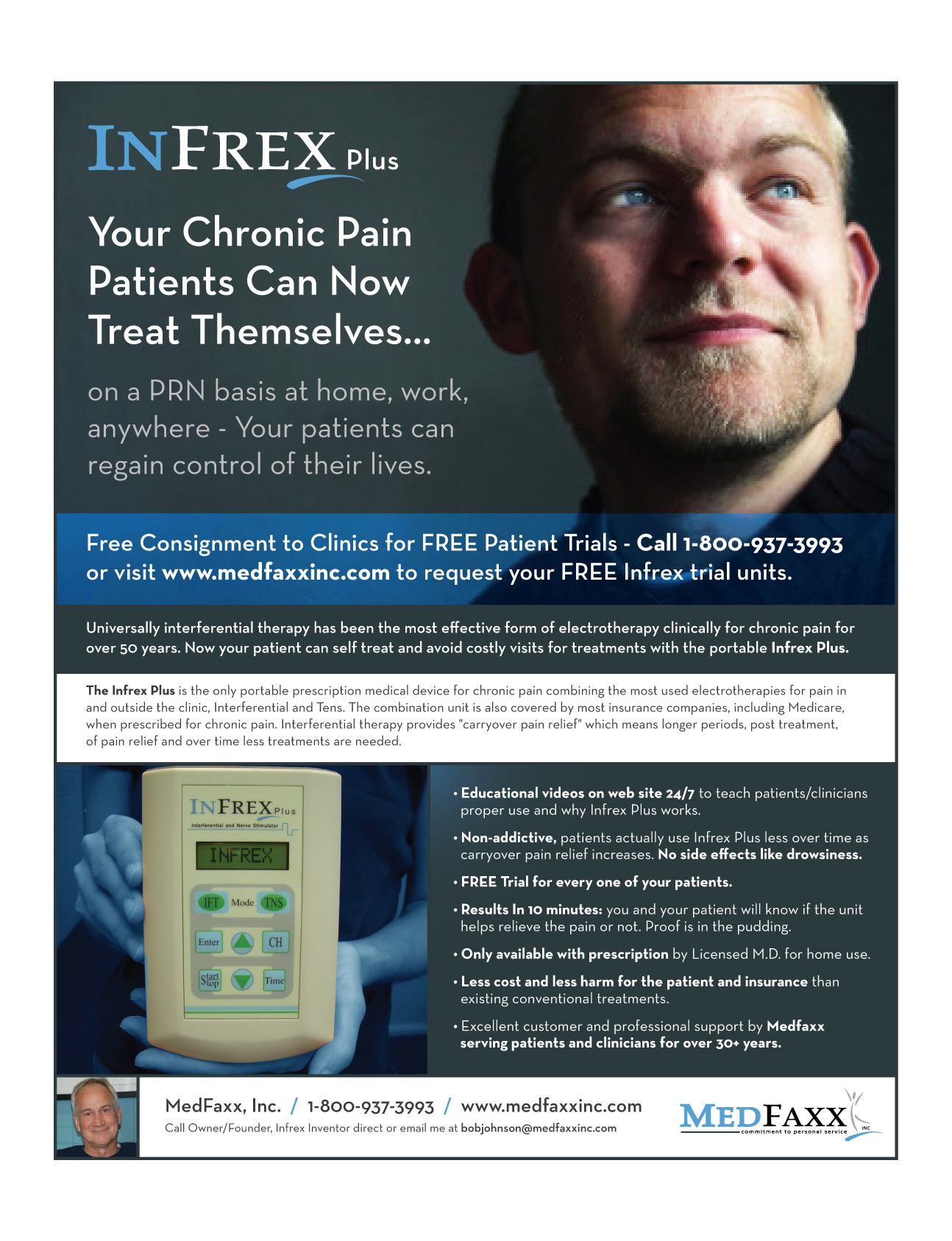How do I decide on a Tens or an Interferential Unit and what is the difference between tens & interferential therapy?
What is a Tens or Tns machine?
Transcutaneous Electric Nerve Stimulator (TNS) is a small lightweight portable device that goes off and on from 1- 150 times per second, which is referred to as frequency or rate, pulses per second ( PPS).
The tens pain machine can be worn continuously, even sleeping with it on to help the patient sleep. A Tens machine is not addictive, nor like drugs, does it affect ones mental abilities to think and reason. Often if the Tens machine is turned off the pain comes back. There is no residual pain relief generally speaking when one uses a Tens unit. Fro many patients the tens pain machine may be worn continuously.
What is Interferential?
Interferential machines go off and on from 8,001 to 8,150 times per second.
This is also referred to as frequency, rate, PPS and there is a relationship between frequency and depth of penetration. The interferential treatments go deeper into the body and affect more nerves. When the electricity is able to penetrate deeper then the better the treatment outcome is for the pain patient.
Is there a difference between treatment times between tens and interferential?
An interferential treatment generally lasts in the clinic for 20 minutes. During the interferential treatment the pain the patient is feeling goes away and, after the treatment, the pain is gone for some time period. The time from the treatment until the pain returns is called "carryover pain relief."
What is the major difference between the two therapies?
The biggest difference between a Tens treatment and an interferential treatment is the carryover pain relief period. With TENS the pain often comes back shortly after the pain machine is turned off. With interferential therapy the pain is gone and stays away for longer periods of time. As Interferential therapy treatments are increased then the carryover pain relief is extended..
Eventually will the interferential unit not be needed?
What is most likely is when a patient starts using an interferential unit they may need to do 3 - 5 treatments the first 2 days. After the first week or few days then the patient finds they only need to do a treatment every 2-3 days. It is not unusual for a patient who has been in chronic pain for years to do an interferential treatment upon waking in the morning and/or upon going to bed at night.
Then is it best to only use the unit twice or what?
With tens or interferential one can use the unit anytime there is pain present. If using tens or interferential and its difficult to sleep, due to pain, then wear the unit all night long if it helps the pain go away and one can sleep. If using interferential therapy then use the AC adaptor and plug into the wall since the unit will be on for extended time period.
What happens if one falls asleep with an interferential unit on?
Nothing other than the patient is able to sleep. First, that will not be a problem. One will not be harmed in any way. On most interferential units, and on some TENS units, there is also a timer. Most timers can be set for 15, 30, 45 minutes of stimulation, or set on Continuous mode. If 15,30 or 45 minutes of treatment occurs and the unit goes off, but the pain comes back, then switch to Continuous and wear until the pain is gone. The explanation for this is the purpose of tens or interferential is to get rid of the pain signal. Neither a tens or interferential unit is meant for the patient to "feel the unit all the time". The purpose is for the patient to not be in pain and to not feel pain..
So if the pain machine, whether tens or interferential is not being felt, then does that mean it is not working?
No again the purpose is to not feel pain. Many times after the interferential machine goes off the patient will not feel any stimulation but that is fine and expected. What the treatment goal is for the patient is to not feel pain, not to feel the stimulation.
Second, the main goal with interferential is to extend the time periods when the patient is pain free, which is referred to as carryover or residual pain relief.
Why is that?
Unlike pain medications the goal with interferential is to not have to use the unit, to extend the carryover pain period and not be in pain. With medications it can be the opposite and the patient is increasing the frequency of taking pills, or asking for more or stronger drugs..
So its successful to not need to use the interferential unit?
Yes. The best outcome is when the use of the interferential unit has resulted in fewer treatments because there is less pain and it is not needed..
Third and last, but not necessarily least, is due to some chemical changes that occur in the body, as well as a patient being able to become more active, the real possibility that permanent change is occurring in the body and the unnatural pain impulse is being modified or simply goes away for good may be occurring.
The explanation for that is we know for sure that positive and negative charges affect our cell and tissue structures which includes nerves. Now that a patient can self treat as needed the ability to do such is opening up new possibilities of permanent structural change and the pain impulse is thwarted.
O.K. so how might we tell if this is being successful?
With an interferential treatment the pain will lessen or go away during the first 5 minutes of the treatment for most people. The results will be there within the first 20 minute treatment session. Remember that inferential treatments have been used successfully since the 1950's and with utmost success. The big difference now is the treatments can be done by the patient at home, work or where needed, and not have to go to a clinic or hospital for treatments.
This new innovation in portable interferential is also much less expensive and does not involve taking off work, scheduling, and having to drive to a hospital or clinic for treatment.
How does one try tens and interferential to see which works best?
Either a tens unit can be tried or an interferential unit and one can see which helps most. Often the combination of using tens sometimes and interferential at other times is best for the patient. Also seek a pain machine that combines tens and interferential together in one unit such as the Infrex Plus which allows the patient to switch between the tens and the interferential modes, so both tens and interferential can be tried using the same machine. Switch the treatment between tens and interferential as needed. Tens and interferential units use the same electrode pads, cables etc. so two sets of supplies are not needed, although interferential treatments because of more electrical energy, work best when larger electrodes are used than what is customarily used with only a tens unit.



